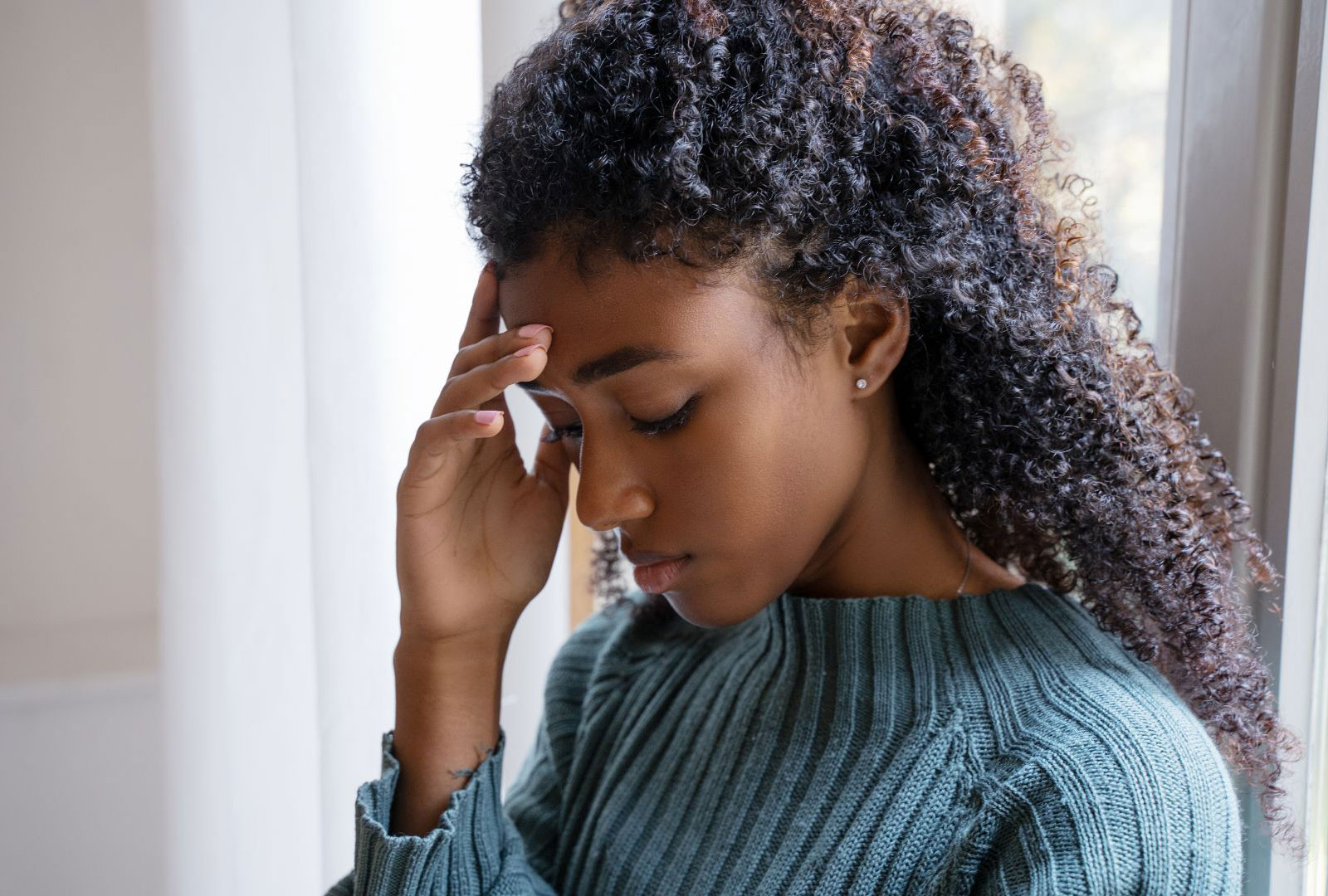In September 2022, the U.S. Preventive Services Task Force released a recommendation that all adults under 65 should be screened for anxiety – regardless of their perceived current mental state or prior mental health history. Anxiety is a condition that affects more than 40 million adults in the United States, and its prevalence has only continued to increase in light of COVID-19. This blog will discuss who the Task Force is, their recent recommendation, and how mental health has changed in response to COVID-19 worldwide. Lastly, we’ll briefly explore anxiety disorders and what to look out for if you think you might be struggling with anxiety.
What Is The Task Force?
Established in 1984, the U.S. Preventive Services Task Force is an independent, volunteer panel of national experts in prevention, evidence-based medicine, and primary care. Their members are appointed by the Agency for Healthcare Research and Quality (AHRQ) – a division of the U.S. Department of Health and Human Services. The 16-member task force is composed of medical doctors, registered nurses, and clinical psychologists, many of whom have degrees in public health as well.
Since 1998, the AHRQ has been authorized by the U.S. Congress to convene the Task Force and provide ongoing scientific, administrative, and dissemination support. The Task Force makes a report to Congress each year recommending priority areas in public health as well as identifying critical evidence gaps in research. All recommendations are published on the Task Force’s website and/or in a peer-reviewed journal. The purpose of the Task Force is to improve the health of people nationwide by making evidence-based recommendations about clinical services, such as screenings, counseling services, and preventive medications.
What Did They Recommend?
As previously mentioned, the Task Force recommendation we’ll be discussing in this blog involves screening adults for anxiety. The recommendation applies to adults ages 19-65, including pregnant and postpartum persons, who do not have a diagnosed mental health disorder or are not showing recognized signs or symptoms of anxiety. The Task Force assigns a letter grade (A, B, C, D, or I) based on the strength of the evidence and the balance of benefits and harms of preventive service. This recommendation was assigned a letter grade of B indicating the Task Force recommends the service and there is moderate to high certainty that the net benefit is moderate to substantial.
The Task Force reviewed 20,543 abstracts and assessed 1176 full-text articles. In the end, 173 studies (80 existing systematic reviews and 90 primary studies) were included, covering an estimated 8.5 million persons, across a wide variety of conditions. Their three main areas of focus in reviewing those articles were assessing the accuracy of screening tests, the benefits of early detection and treatment, and the harms of screening and treatment. Summaries of the Task Force’s findings regarding those three areas of focus include:
- Adequate evidence that screening tools accurately identify anxiety in adults and pregnant and postpartum persons
- Adequate evidence that psychological interventions to treat anxiety are associated with a moderate magnitude of benefit for reduced anxiety symptoms in adults
- Adequate evidence to bound the magnitude of harms of psychotherapy as no greater than small
Based on these key findings, the Task Force’s final assessment was, “The USPSTF concluded with moderate certainty that screening for anxiety in adults, including pregnant and postpartum persons, has a moderate net benefit in improving outcomes such as treatment response and disease remission.” The Task Force stopped short of recommending anxiety screening for seniors aged 65 and up because symptoms of anxiety and aging often overlap, so the research was less conclusive.
The Impact of COVID-19
The research behind the recommendation was initiated years ago, but as Dr. Lori Pbert – a clinical psychologist and member of the Task Force – stated in an interview with NPR’s Michel Martin, “this topic is coming out as a draft recommendation at just the right time.” She goes on to explain that the COVID-19 pandemic has taken a tremendous toll on the mental health of people worldwide and rates of mental illness have continued to increase. Dr. Pbert states that early in the pandemic the percent of adults with symptoms of an anxiety or depressive disorder increased from 36% to 42%. This figure echoes a trend supported by a brief released by the World Health Organization (WHO) in March 2022, which found that the global prevalence of anxiety and depression increased by an astounding 25% in the first year of the COVID-19 pandemic.
The WHO brief goes on to describe how the declining mental health that has been associated with the pandemic is the result of several stress factors. One major explanation they cite is social isolation, which was also linked to constraints on people’s ability to work, seeking support from loved ones, and engaging with their communities. Other common stress factors introduced by the COVID-19 pandemic, such as loneliness, fear of infection, and grief, were also cited in the brief as stressors that have contributed to the declining mental health witnessed during the pandemic. For more information on how the pandemic may have affected your health – mental and physical – check out our past blog posts (Pandemic Brain vs Adult ADHD and Adjusting to Life After the Pandemic)!
Challenges For The New Recommendation
In the same NPR interview with Dr. Pbert, interviewer Michel Martin explains that he wonders what the Task Force’s recommendation means in regards to existing problems in healthcare, such as the undersized mental health care workforce. There already exists a massive shortage of mental health care professionals nationwide, and further exacerbating the problem, is the uneven distribution of those who are currently practicing since they tend to congregate in densely-populated, urban areas. This translates to people in more rural areas having to travel great distances to seek out the mental health care they need and longer wait times for even those who live in urban areas. In response to these concerns, Dr. Pbert acknowledged the incredible difficulty people living in areas with limited access to health care face. She says, “the Task Force’s hope is that putting forth this set of recommendations can help bring awareness of the need to create greater access to evidence-based mental health care throughout the country” and that we as a nation need to have “more resources to be able to meet the demand that we already have and the demand that would come from additional recommendations for screening.”
Another existing problem the healthcare community faces is how to account for health disparities and actively promote health equity. The Task Force recommendation spreads awareness for the profound need to tend to national mental health at the primary care level. However, the political, economic, and social problems that led BIPOC individuals, females, people of lower SES, etc. to experience more hardship during the COVID-19 pandemic are the same problems that pose challenges to the practical application of the Task Force’s new recommendation. Structural racism, income inequalities, and lack of insurance are just a few of the barriers derived from larger, systemic dysfunction that keep people from getting the mental health care they need. In response to these concerns, Dr. Pbert stated, “the Task Force is really committed to helping address these negative impacts of systemic racism on health. It needs to be a multipronged approach. What the Task Force does is work on getting the best evidence and guidelines to clinicians so that they have the preventive services that they can deliver to their patients. At the same time, we need to have… political, societal change that addresses these other barriers to developing anxiety disorders as well as to treating and managing those anxiety disorders.”
Do You Believe You’re Experiencing Anxiety?
When referring to a disorder, what most people describe as “anxiety” is formally known as Generalized Anxiety Disorder (GAD). GAD actually belongs to a list of twelve anxiety disorders as classified by the DSM-5. Some of the most common anxiety disorders include GAD, social anxiety disorder, panic disorder, and specific phobia. While everyone experiences anxiety to some degree, people with anxiety disorders experience frequent intense, excessive, and persistent worry and fear about everyday situations. Experiencing anxiety becomes a disorder when it persists for at least six months and is typically accompanied by physical symptoms, such as muscle tension, headaches, or gastrointestinal distress. Other common signs and symptoms of anxiety to look out for include:
- Feeling nervous, restless, or tense
- Having a sense of impending danger, panic, or doom
- Having an increased heart rate
- Rapid breathing
- Sweating
- Trembling
- Trouble concentrating
- Sleeping difficulties
- Having the urge to avoid things that trigger anxiety
If you believe you have, or are in the process of, developing an anxiety disorder, it is best to seek professional help as soon as possible. Anxiety disorders are highly treatable, and the earlier a case of anxiety is detected, the better an individual’s prognosis. A qualified mental health care professional will be able to properly assess whether your symptoms meet the criteria for an anxiety disorder and, if so, what type. They can also develop a treatment plan with you that may include psychotherapy (talk therapy), medication, or both. A variety of anxiety treatments are available, and depending on the severity of the condition when treatment begins, individuals symptoms of anxiety may fully subside over time.







